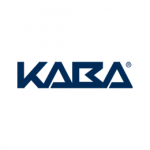
4K, or not 4K
July 18, 2016Rather than paraphrasing The Bard of Avon, with “4K, or not 4K”, maybe we should say “4K .. or Ultra HD”?
Even as we shoot motion footage today, there are cameras (and monitors) offering a resolution way beyond the current television broadcast standard of HD.
HD or High Definition, displays an image 1920 pixels wide by 1080 pixels high. In the industry, individuals use different terms for this resolution. Broadcasters may call it ‘1080’, following the practice of defining horizontal scan lines, as a PAL image is ‘625’ and NTSC is ‘525’. Some use the terms ‘1080p’ (for progressive scan) of 30 frames per second (fps) and ‘1080i’ (for interlaced) at 60 fields per second, referring to the two fields within each frame. Computer programmers and graphic designers; who commonly refer to a measurement of pixels on each axis; may use ‘1920 × 1080’.
No matter what you call it, some may simply refer to HD as ‘the old standard’.
While HD is a signal many terrestrial broadcasters have only in recent years started transmitting; and while it is the standard for most online video platforms; the format has been around for over thirty years.
Japanese engineers developed HDTV in the 1980s. Sony, Canon, NHK, Ad Agency Hakuhodo and laboratory Imagica, all collaborated to shoot ground-breaking sequences in Queensland. Digital Tsunami founder Andrew W Morse, was Production Manager of this first shoot in Australia on the massive High Definition studio cameras.
Giving a television interview on location, Morse needed to explain the meaning of ‘pixel’, a relatively unknown term in the cathode ray tube era. The HDTV gear was so large; that in order to film on Whitehaven Beach; the executives flew by helicopter, but we also had to charter a barge to take our large crew and the truck in which all the camera, monitoring and data storage equipment was installed.
As SeaWorld dolphins leapt into the air, the crystal clear images of water and spray were astoundingly sharp, bright and full of rich colour. This image quality was in stark contrast to the blurry video images of the day. At the time, only 35mm film could achieve such high quality, which is why most drama and commercials productions were shot on film.
Decades later, 4K cameras allow us to shoot stunningly sharp, rich images with dramatically more data in every frame. Where HD offers 2 million pixels (megapixels) per image, 4K is four times larger, delivering over 8 megapixels per image.
However, terms still need defining. An image of 3,840 × 2,160 pixels is sometimes referred to as 4K, but is more accurately described as ‘Ultra HD’. To differentiate, 4096 × 2160 images are sometimes referred to as ‘True’ 4K.
With 8K cameras launched in 2015, the obligation of filmmakers to their clients, is to deliver the best images which can be displayed on currently available monitors and projectors. Very large 8K television monitors have been available for a year or more, but prices are still exceptionally high.
So when the question is posed today on which resolution to shoot, the answer is:
“Not HD. Not Ultra HD. .. It must be 4K” !
Review recent 4K video productions:
Craig Defence video
Master Residences Yinchuan video
Hanas LNG bilingual video
Hanas Windfarm video
From Our Clients


I would like to thank you for your tremendous contribution to Foodbank over the years.
The organisation certainly wouldn’t be where we are today without your support!


Thanks to you and the Taishan production crew. Andy and the rest of the team were outstanding. Their professionalism was evident the entire time and they seemed to build a nice relationship with the factory employees, which led to a real spirit of cooperation. My sincere thanks for a job extremely well done.


Foodbank has experienced unprecedented growth .. there is no doubt that the new Foodbank website, designed, built and maintained pro bono by Digital Tsunami, has been the principle tool in lifting Foodbank's profile. It is because our website is so engaging, that we have captured these donations. Foodbank just wouldn't be where we are today without Digital Tsunami.


The services provided included the registration of our domain name, establishment of our email accounts, and development & hosting of our website, were all executed rapidly and effectively. We also appreciate the service of upgrading our list of 150 shelf company names (in Chinese characters and English) every 2 weeks.
We valued the high level of creative design provided by Digital Tsunami, both for the website and the corporate identity.


Thank you for all your efforts in creating our new website which achieves our agreed objectives : elegantly smart, yet understated, professional and easy to use.